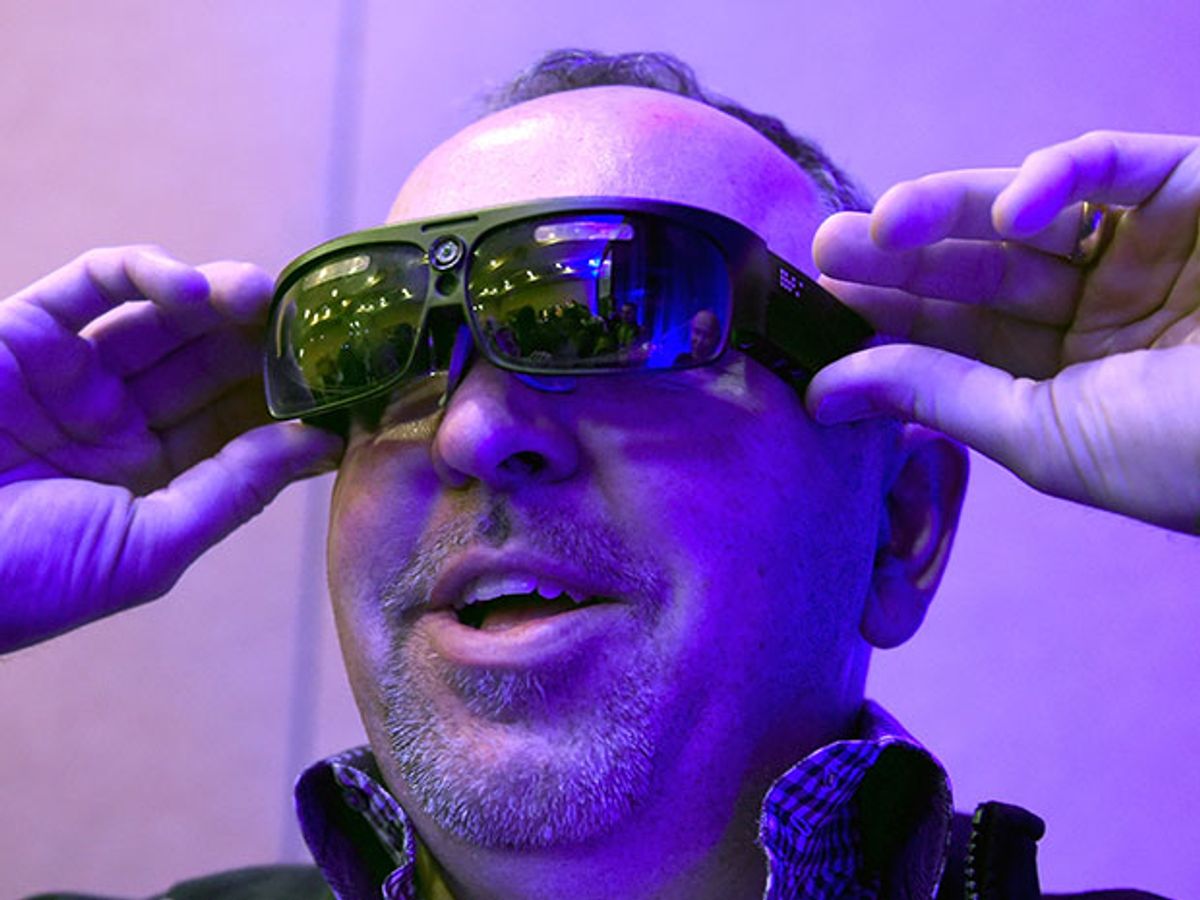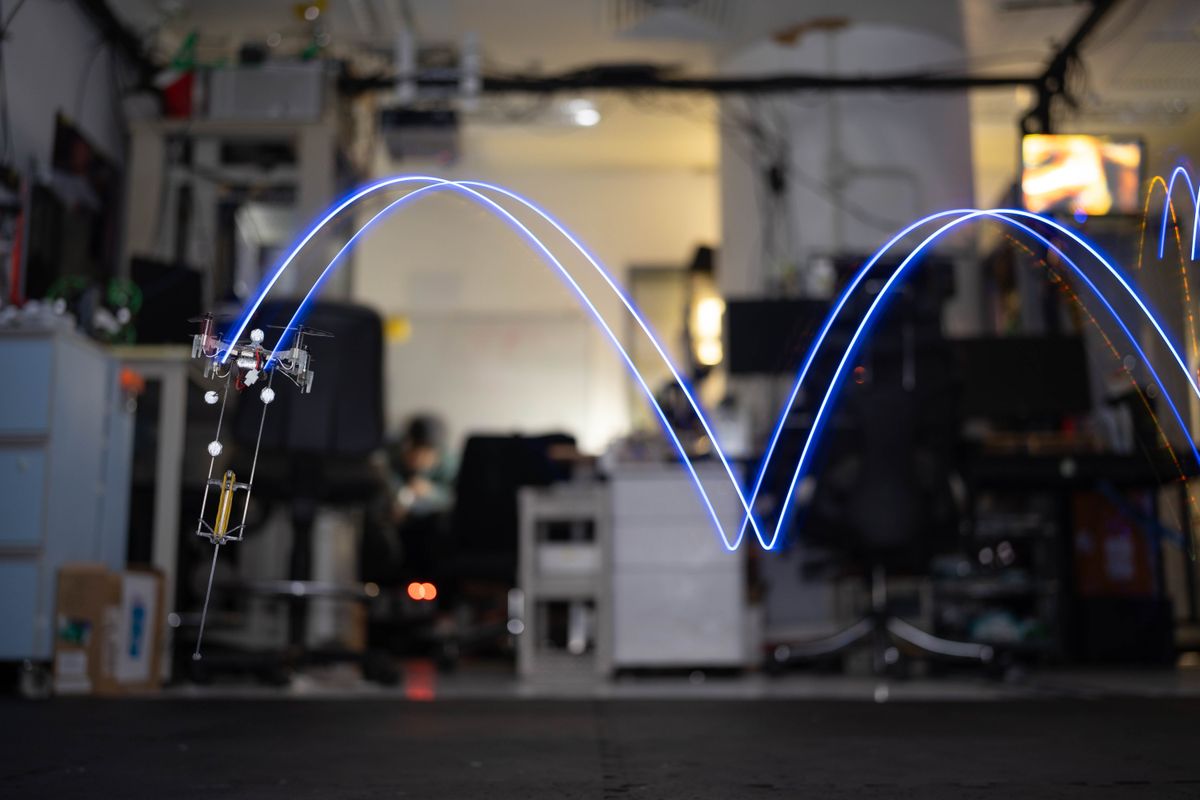The beeping, flashing, pulsating glory of the world’s largest consumer electronics trade show has returned to Las Vegas. The first batch of new products and services went on display at CES on Tuesday, and startups and industry giants will debut more gadgets and technologies throughout the week.
Just a few of the curious wares spotted by IEEE Spectrumeditors last night include a battery-powered scarf that filters air pollution, a hairbrush that uses sound waves to analyze dryness and frizz, a smart cane that detects falls, and a connected cat feeder that avoids overfeeding by recognizing felines by implanted microchips. Also, a US $120 camera that lets you stare at the inside of your refrigerator, should you ever choose to do that (assuming the milk isn’t blocking the view).
Major technology companies have also begun to make their announcements about new products they will launch in 2017. Qualcomm released its newest chip, the Snapdragon 835, which, rumor has it, could turn up in Samsung Galaxy 8 smartphones later this year. Huawei said its newest Honor smartphone, called the 6X, which boasts a battery life of 2.1 days and costs only $250, is now available in the United States. And Faraday Future unveiled its long-awaited self-parking FF 91 electric car, which integrates more than 30 sensors including cameras and a retractable lidar system to navigate into a parking space all on its own.
Looking at deeper trends, several experts said the most meaningful long-term developments will come from the companies scraping away at voice recognition. Once we master it, they believe, voice-recognition capabilities will fundamentally change the way we interact with and build electronics.
This was a strong element of Tuesday’s analysis of the global consumer market by Shawn DuBravac, chief economist, and Steve Koenig, senior director for market research, of the Consumer Technology Association (CTA), which runs CES. In DuBravac’s opinion, voice-recognition technology has improved enough in the past few years that it is now poised to usher in an era of so-called faceless computing.
In particular, the word error rate for voice-recognition systems dropped from 43 percent in 1995 to just 6.3 percent this year, and is now on par with humans. “We have seen more progress in this technology in the last 30 months than we saw in the first 30 years,” DuBravac said. Another analyst attending CES that I spoke to was Ronan de Renesse, a consumer technology analyst for the business intelligence firm Ovum, who said he was watching a startup called Voicebox, which has worked on voice recognition for partners including Samsung, AT&T, and Toyota.
In addition to redefining the traditional computer interfaces, voice recognition could improve a host of products that are already on the market. CTA estimates total sales of voice-activated digital assistants such as Google Home or Amazon Echo to be about 5 million units to date, and expects that to double to 10 million in 2017. With all of these products, clarity and functionality are key. DuBravac figures there are currently about 1,500 apps (called “skills” in Amazon-speak) that can interact with Alexa, Amazon’s voice-activated personality and says he would not be surprised to see 700 new ones announced just this year at CES.
Aside from voice recognition, de Renesse also thinks that virtual reality and augmented reality will be “at the forefront of CES” again this year. These technologies had a flagship 2016 with the release of the HTC Vive and Oculus Rift headsets, but some have since complained that the technology isn’t catching on as quickly as they’d hoped. One reason could be that there’s still a profound lack of high-quality VR and AR content to enjoy for those who do shell out $600 or more for a headset.
DuBravac says these criticisms are partly a symptom of too-high initial expectations for VR, and not necessarily a reflection of the technology itself. He’s still optimistic, however, because he sees companies investing in VR content. As for his assessment of the progress made in 2016: “If you had realistic expectations about what would happen and the deployment of hardware would look like, then I think you saw a market starting to take hold,” he says.
Anshel Sag, an analyst at Moor Insights & Strategy, is also frustrated by the proclamations that VR is struggling. Even though he doesn’t expect any major VR announcements at CES 2017, he says that’s because the product-release cycles of VR companies simply didn’t sync up with CES this year. But he cautions anyone from reading too much into this.
Nonetheless, several headset manufacturers and content developers are planning to put their best foot forward at the show. Samsung will continue to push mobile VR, which operates on less expensive headsets, such as the $60 Samsung Gear, that allow you to insert your smartphone to stream VR. Sag has also been impressed by a company called ODG, which is working on a pair of heavy-duty eyeglasses that convert from viewing in AR to VR.
Funnily enough, CES might also be at least partly to blame for VR criticisms. Every year at the show, analysts and journalists try to predict the new fads and hottest products that will redefine consumer technology as we know it. Too often, they are surprised when those trends fail to materialize or reach the adoption rates they had expected.
The truth is that breakout tech stars are a relatively rare sight, even at CES. In fact, the vast majority of global consumer tech spending—80 percent—goes toward just seven types of products. The CTA’s Steve Koenig calls those technologies the “magnificent seven.” That includes smartphones, laptops, tablets, desktops, digital cameras, TVs, and smart watches (a recent addition as the Apple iWatch outpaced the iPhone in first-year sales).
On their own, smartphones account for a staggering 47 percent of global consumer spending on technology and remain the “center of the consumer tech universe,” as Koenig puts it, with their own ecosystem of apps and services. But to be fair, they were also first released more than a decade ago.
Rather than looking at everything through the lens of mass adoption, DuBravac says the market for most tech products is actually very fragmented. As an example, he points to the wearables market and the $125 VERTbelt for athletes that measures their jumps during practice and games. In his assessment, lots of startups will offer products for a specific use and find plenty of customers without ever reaching mass adoption. And that’s fine, too.



